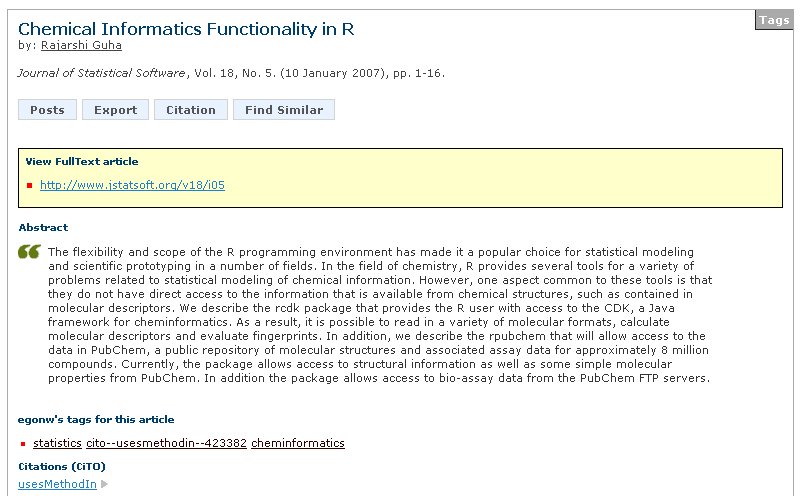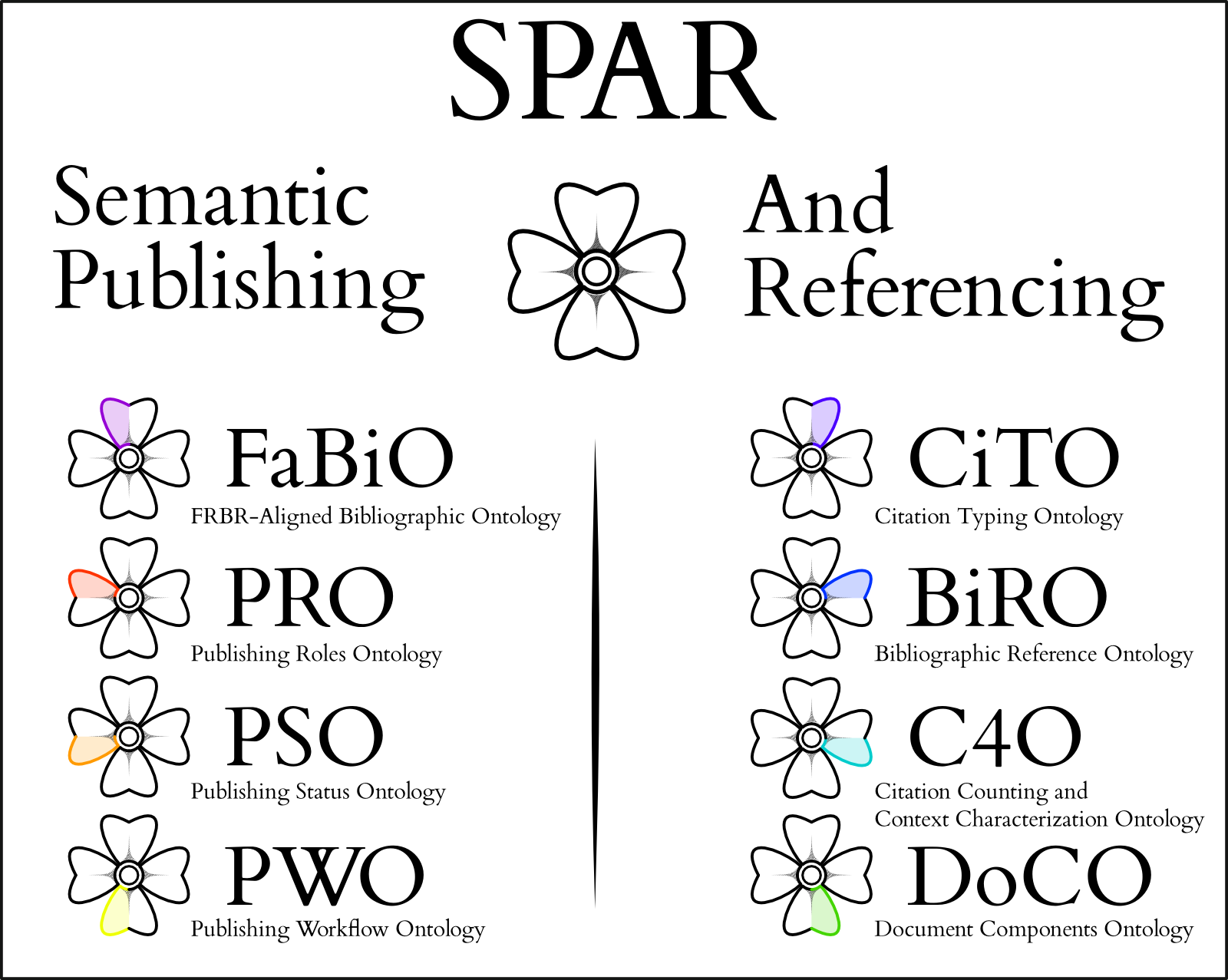Silvio Peroni has recently created LODE (Live OWL Documentation Environment;
The last four SPAR ontologies – the Document Components Ontology DoCO, the Publishing Roles Ontology PRO, the Publishing Status Ontology PSO and the Publishing Workflow Ontology PWO – were recently completed. All eight SPAR ontologies have now been thoroughly revised and checked, and are stable and ready for use.
In his recent blog post entitled How to use Citation Typing Ontology (CiTO) in your blog posts , Martin Fenner describes a plug-in for WordPress he has created that makes it easy to add citation typing into your blog post, using a sub-set of the CiTO (Citation Typing Ontology) relationships presented in a convenient drop-down menu.

Jodi Schneider of DERI has posted on her blog at http://jodischneider.com/blog/2010/10/18/cito-in-the-wild/ a most helpful description of how to employ CiTO properties characterizing bibliographic citations as tags for references in CiteULike. Thanks, Jodi!

Egon Willighagen, at Uppsala University, has pioneered the use of object properties from CiTO, the Citation Typing Ontology, to characterize bibliographic citations in CiteULike, the free service for managing and discovering scholarly references. Indeed, it was his use case that persuaded me of the need to generalize CiTO to include indirect citations.

This blog post is to introduce the first four ontologies of SPAR, the Semantic Publishing and Referencing Ontologies, an integrated ecosystem of generic ontologies shown diagrammatically in the ‘flower’ diagram below (Figure 1). The ontologies can be used either individually or in conjunction, as need dictates.
